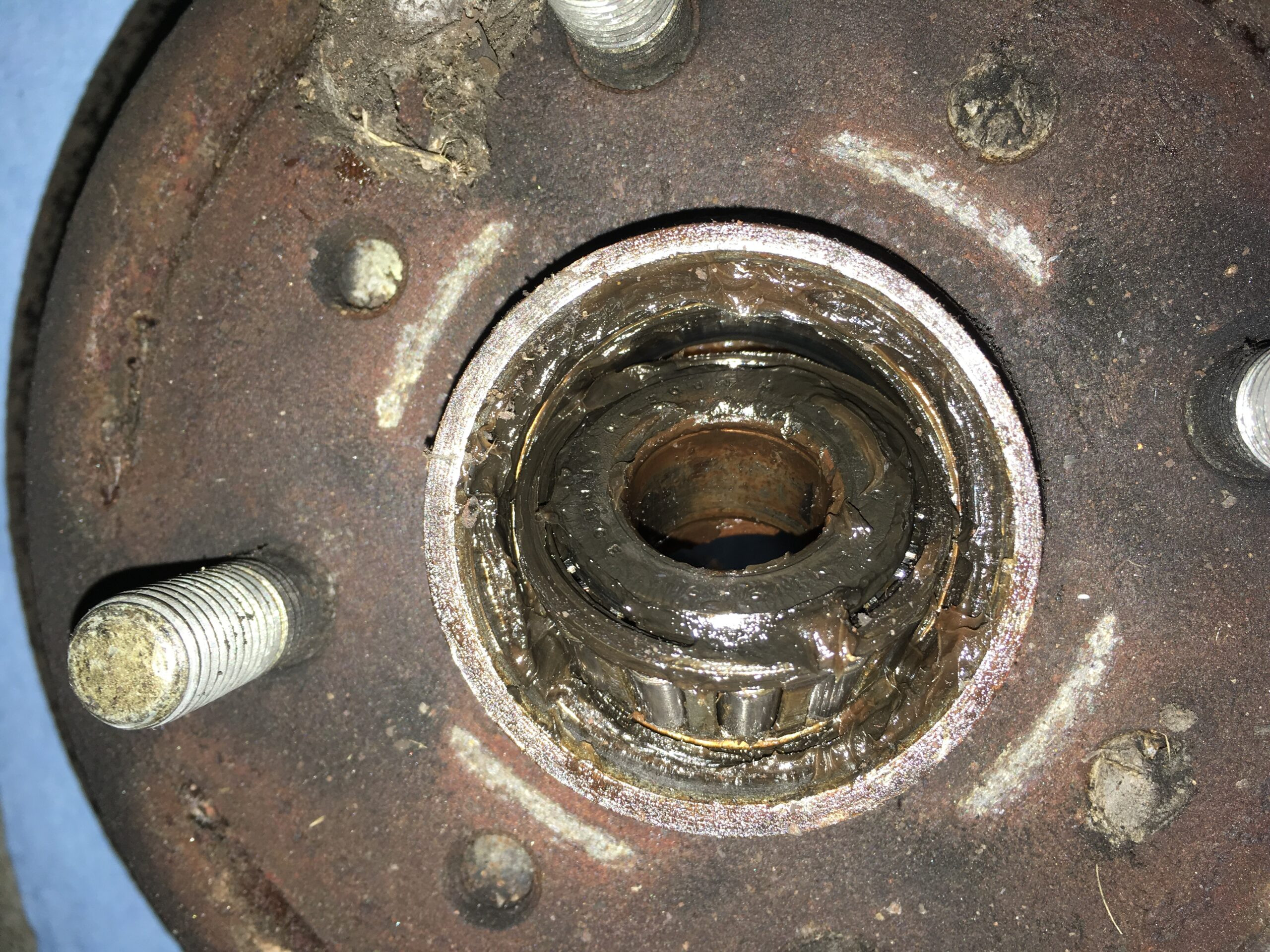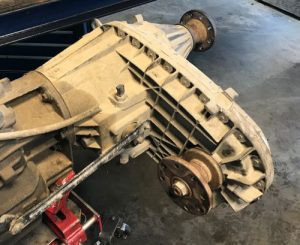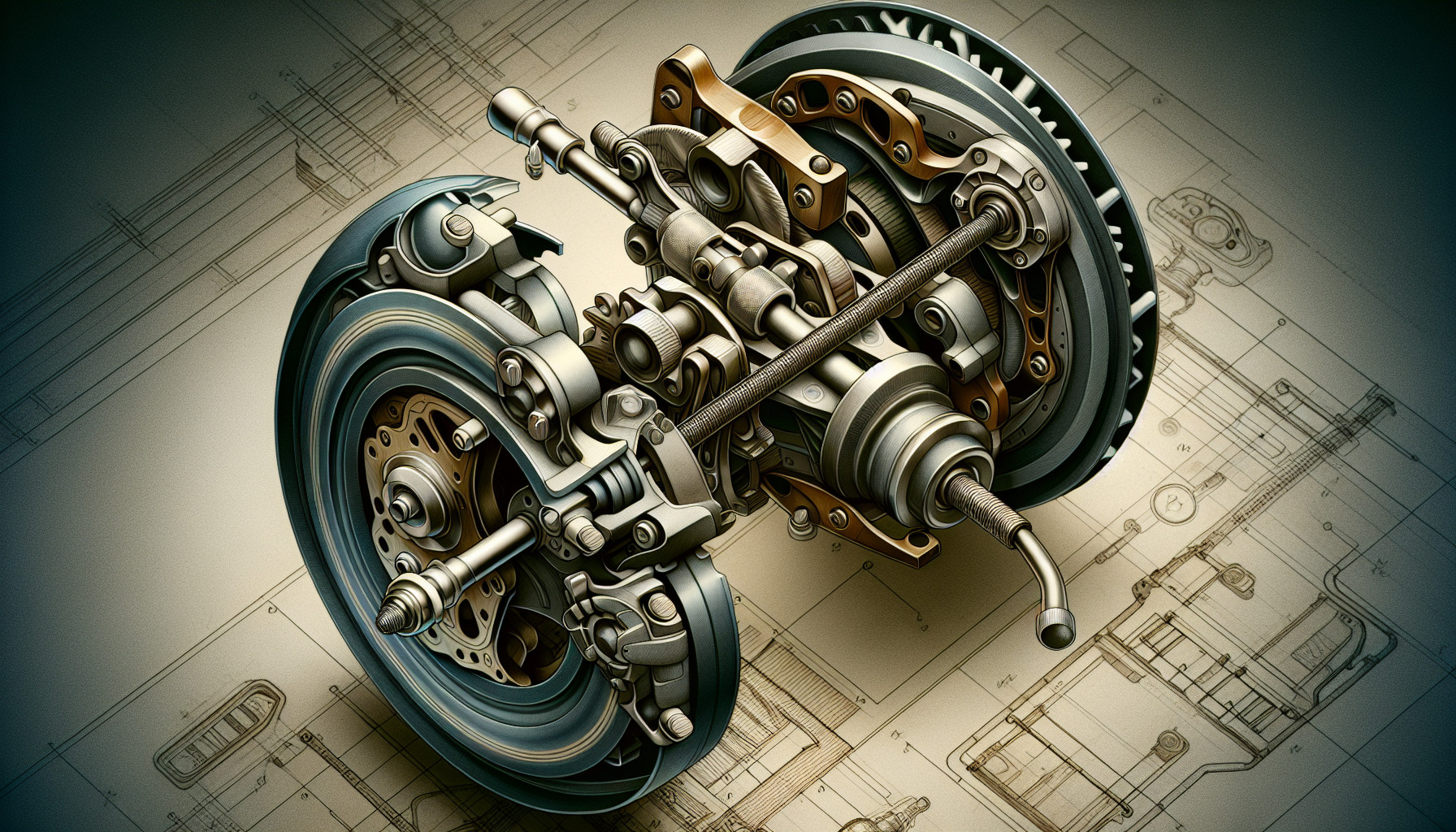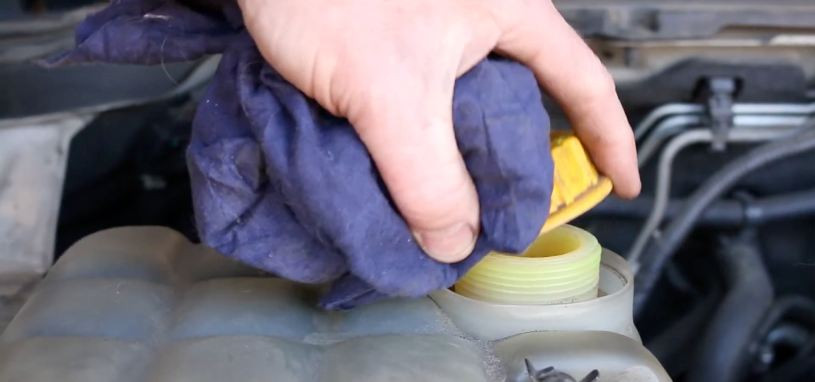How to Check the Power Door Lock System? A Comprehensive Guide
Is your car’s power door lock system acting up? At CARDIAGTECH.NET, we understand the frustration of malfunctioning power door locks. This comprehensive guide provides a step-by-step approach to diagnosing and fixing common issues, ensuring your vehicle’s security and convenience are restored. We’ll delve into potential problems and equip you with the knowledge to tackle them effectively.
1. Understanding the Power Door Lock System
What exactly is the power door lock system and how does it work?
The power door lock system is an interconnected network of electrical and mechanical components designed to lock and unlock vehicle doors simultaneously with the press of a button or the turn of a key. According to a study by the National Highway Traffic Safety Administration (NHTSA), power door locks significantly enhance vehicle safety and security.
1.1 Components of the System
What are the primary components of a power door lock system?
The system generally includes:
- Actuators: Electric motors that physically move the door lock mechanism.
- Switches: Located on the door panels and sometimes the center console, these control the flow of electricity to the actuators.
- Wiring: Connects all the components, carrying electrical signals throughout the system.
- Control Module: A computer that manages the operation of the power door locks, often integrated with the vehicle’s security system.
- Fuses and Relays: Protect the electrical circuits from overloads and control high-current operations.
Alt text: Power door lock actuator removed from a car door showing electrical connector and mechanical linkage
1.2 How the System Works
How does the power door lock system function in practice?
When you press the lock or unlock button, the switch sends a signal to the control module. The control module then activates the appropriate actuators in each door. These actuators move the locking mechanisms, either locking or unlocking the doors.
2. Identifying the Problem
What are the common symptoms of a faulty power door lock system?
Recognizing the symptoms is the first step in diagnosing the issue. Common symptoms include:
- One or more doors not locking/unlocking: This could indicate a problem with the actuator, wiring, or switch in the affected door.
- Intermittent operation: The locks work sometimes but not others, suggesting a loose connection or failing component.
- All doors not working: This could point to a problem with the main switch, control module, fuse, or wiring harness.
- Unusual noises: Grinding or clicking sounds from the door could indicate a failing actuator.
- Locks working only with the key: If the power locks only work when using the physical key, the issue likely lies within the electrical components of the system.
2.1 Preliminary Checks
What preliminary checks can be done before diving into complex diagnostics?
Before you start taking things apart, perform these simple checks:
- Check the Fuses: Locate the fuse box (usually under the dashboard or in the engine compartment) and check the fuse for the power door locks. A blown fuse is a common and easy-to-fix problem. According to the Electrical Engineering Portal, fuses are designed to protect circuits from overcurrent, so replacing a blown fuse with one of the same rating is crucial.
- Check the Battery Voltage: Ensure your car battery has sufficient voltage. Low voltage can sometimes cause electrical systems to malfunction. A healthy car battery should read around 12.6 volts when the engine is off, according to Battery Council International.
- Inspect the Key Fob: If you use a key fob to control the locks, make sure the battery isn’t dead. Try replacing the battery and re-syncing the fob with the vehicle.
- Examine Wiring Harnesses: Look for any visible damage to the wiring harnesses, especially in the door jamb area, where wires can get pinched or broken from repeated door movements.
3. Step-by-Step Guide to Checking the Power Door Lock System
How can I systematically check the power door lock system?
Follow these steps for a thorough diagnosis:
3.1 Tools You’ll Need
What tools are required for diagnosing and repairing the power door lock system?
- Multimeter: For testing voltage and continuity.
- Wiring Diagram: Crucial for understanding the system’s layout.
- Screwdrivers and Socket Set: For removing door panels and components.
- Door Panel Removal Tool: Helps to remove door panels without causing damage.
- Electrical Contact Cleaner: For cleaning electrical connections.
- WD-40 or Similar Lubricant: To lubricate mechanical parts.
3.2 Accessing the Door Lock Actuator
How do I access the door lock actuator?
- Remove the Door Panel: Use a door panel removal tool to gently pry the panel away from the door. Start at the bottom and work your way around the edges. Be careful not to break any plastic clips.
- Disconnect Electrical Connectors: Once the panel is loose, disconnect any electrical connectors attached to the panel, such as those for the power windows, door locks, and speakers.
- Remove the Water Shield: Peel back the plastic water shield to access the inner door components.
3.3 Testing the Actuator
How can I test the door lock actuator to see if it’s functioning correctly?
- Visual Inspection: Check the actuator for any visible damage or corrosion.
- Multimeter Test:
- Set your multimeter to measure DC voltage.
- Disconnect the actuator from the wiring harness.
- Use a wiring diagram to identify the power and ground wires for the actuator.
- Connect the multimeter leads to the power and ground terminals of the wiring harness connector.
- Have someone activate the power door lock switch. You should see a voltage reading (usually 12V) when the switch is activated. If there is no voltage, the problem may be in the switch, wiring, or control module.
- If you have voltage, the actuator itself may be faulty. You can test the actuator directly by applying 12V directly to its terminals (observe polarity). If the actuator doesn’t move, it needs to be replaced.
3.4 Checking the Door Lock Switch
How can I test the door lock switch?
- Locate the Switch: The door lock switch is typically located on the door panel or center console.
- Remove the Switch: Carefully pry the switch out of its housing.
- Multimeter Test:
- Set your multimeter to measure continuity.
- Disconnect the switch from the wiring harness.
- Use a wiring diagram to identify the terminals for the lock and unlock functions.
- Place the multimeter leads on the appropriate terminals and activate the switch. You should see continuity when the switch is pressed. If not, the switch is faulty and needs to be replaced.
3.5 Inspecting the Wiring
What should I look for when inspecting the wiring of the power door lock system?
- Visual Inspection: Look for any signs of damage, such as frayed wires, broken insulation, or corrosion. Pay close attention to areas where the wires pass through the door jamb, as these areas are prone to wear.
- Continuity Test:
- Use a multimeter to check the continuity of each wire in the circuit.
- Disconnect the battery to prevent electrical shock.
- Place one multimeter lead on one end of the wire and the other lead on the other end. You should see continuity (a reading of 0 ohms or a beep from the multimeter) if the wire is intact. If not, the wire is broken and needs to be replaced.
- Voltage Drop Test:
- A voltage drop test can help identify issues with wiring that may not be obvious during a visual inspection.
- Connect the multimeter in parallel with the circuit you’re testing.
- Activate the circuit (e.g., by pressing the power door lock switch).
- Measure the voltage drop across the wire. A high voltage drop indicates excessive resistance in the wire, which could be due to corrosion or damage.
3.6 Examining the Control Module
How can I check the control module of the power door lock system?
- Locate the Control Module: The control module is typically located under the dashboard or in the center console. Refer to your vehicle’s service manual for the exact location.
- Visual Inspection: Check the module for any signs of damage, such as burn marks or corrosion.
- Wiring Inspection: Inspect the wiring harness connected to the module for any damage or loose connections.
- Module Testing:
- Testing the control module typically requires specialized diagnostic equipment.
- Connect a diagnostic scanner to the vehicle’s OBD-II port.
- Use the scanner to check for any fault codes related to the power door lock system.
- Follow the scanner’s instructions to perform any available diagnostic tests on the control module.
If the control module is faulty, it may need to be replaced and reprogrammed. This is often best left to a professional technician.
4. Common Problems and Solutions
What are the most frequent issues encountered with power door lock systems, and how can they be resolved?
Here are some common problems and their solutions:
| Problem | Possible Cause(s) | Solution(s) |
|---|---|---|
| Door locks not working | Blown fuse, faulty actuator, broken wire, faulty switch | Check and replace the fuse, replace the actuator, repair the wire, replace the switch |
| Intermittent operation | Loose connection, corroded contacts, failing actuator | Clean the contacts, tighten the connections, replace the actuator |
| All doors not working | Faulty control module, blown fuse, broken wire | Replace the control module, check and replace the fuse, repair the wire |
| Unusual noises | Worn actuator gears, debris in the mechanism | Replace the actuator, clean the mechanism |
| Locks work only with key | Faulty switch, broken wire, faulty control module | Replace the switch, repair the wire, replace the control module |
| Key fob not working | Dead battery, key fob needs reprogramming, faulty receiver | Replace the battery, reprogram the key fob, replace the receiver |
| One door not working | Bad actuator in that door | Replace the door lock actuator |
| Door locks cycling erratically | Faulty control module, short in wiring | Replace the control module, inspect and repair wiring |
| Door locks drain battery | Short in wiring, actuator constantly trying to actuate | Inspect and repair wiring, replace door lock actuator |
| Actuator getting hot | Actuator getting stuck, wiring short | Replace door lock actuator, inspect and repair wiring |
5. Advanced Troubleshooting
What advanced troubleshooting steps can be taken for complex issues?
For more complex issues, consider the following:
- Using a Scan Tool: A scan tool can read diagnostic trouble codes (DTCs) stored in the vehicle’s computer, providing valuable clues about the source of the problem.
- Checking Ground Connections: Poor ground connections can cause a variety of electrical problems. Make sure all ground connections are clean and tight.
- Consulting a Wiring Diagram: A wiring diagram is essential for tracing the circuit and identifying potential problem areas.
- Testing the BCM (Body Control Module): In some vehicles, the power door locks are controlled by the BCM. Testing the BCM may require specialized equipment and knowledge.
Alt text: Car wiring diagram highlighting the power door lock system circuit
6. Preventative Maintenance
How can I maintain my power door lock system to prevent future issues?
- Regular Lubrication: Lubricate the door lock mechanisms and latches periodically with a silicone-based lubricant.
- Inspect Wiring: Regularly inspect the wiring for any signs of damage or wear.
- Clean Contacts: Clean the electrical contacts with an electrical contact cleaner to prevent corrosion.
- Avoid Slamming Doors: Avoid slamming doors, as this can damage the actuators and other components.
7. Choosing the Right Replacement Parts
How do I select high-quality replacement parts for my power door lock system?
When replacing parts, quality matters. Here’s what to consider:
- OEM vs. Aftermarket: OEM (Original Equipment Manufacturer) parts are made by the vehicle manufacturer and are typically more expensive but offer the best fit and reliability. Aftermarket parts are made by third-party manufacturers and can be more affordable. Research and choose reputable aftermarket brands.
- Check Compatibility: Make sure the replacement part is compatible with your vehicle’s make, model, and year.
- Read Reviews: Read online reviews to get an idea of the quality and reliability of the part.
At CARDIAGTECH.NET, we offer a wide range of high-quality automotive tools and equipment to assist you in diagnosing and repairing your vehicle’s power door lock system. Our products are designed to meet the needs of both professional technicians and DIY enthusiasts.
8. Estimated Repair Costs
What are the typical costs associated with repairing a power door lock system?
The cost of repairing a power door lock system can vary depending on the problem and the parts required. Here are some estimated costs:
| Repair | Estimated Cost |
|---|---|
| Fuse Replacement | $5 – $10 |
| Actuator Replacement | $80 – $250 per door |
| Switch Replacement | $30 – $100 |
| Wiring Repair | $50 – $200 |
| Control Module Replacement | $200 – $500+ |
| Labor Costs | $75 – $150 per hour |
These are just estimates, and the actual cost may vary depending on your location and the specific repair shop.
9. Benefits of a Properly Functioning Power Door Lock System
Why is it important to maintain a properly functioning power door lock system?
A properly functioning power door lock system provides several benefits:
- Enhanced Security: Ensures all doors are securely locked, protecting your vehicle and its contents from theft.
- Convenience: Allows you to lock and unlock all doors with the touch of a button.
- Safety: Can be programmed to automatically lock the doors when the vehicle reaches a certain speed, enhancing safety in the event of an accident.
- Resale Value: A well-maintained vehicle with functioning power door locks is more attractive to potential buyers.
10. Conclusion
How can CARDIAGTECH.NET help me maintain my vehicle’s power door lock system?
Diagnosing and repairing a power door lock system can seem daunting, but with the right tools and knowledge, it’s a manageable task. By following this guide, you can systematically troubleshoot the problem and determine the best course of action.
Remember, if you encounter a complex issue or are uncomfortable performing the repairs yourself, it’s always best to consult a professional technician. For all your automotive diagnostic and repair tool needs, visit CARDIAGTECH.NET. We offer a wide selection of high-quality tools and equipment to help you keep your vehicle in top condition.
FAQ: Power Door Lock System
1. What causes power door locks to stop working?
Power door locks can stop working due to a variety of reasons, including blown fuses, faulty actuators, broken wires, or a malfunctioning control module. According to a report by the National Institute for Automotive Service Excellence (ASE), electrical issues are a common cause of power door lock failures.
2. How do I check if my power door lock actuator is bad?
To check if your power door lock actuator is bad, use a multimeter to test for voltage at the actuator when the door lock switch is activated. If there’s voltage but the actuator doesn’t move, the actuator is likely faulty and needs replacement.
3. Can I fix power door locks myself?
Yes, you can fix power door locks yourself if you have basic mechanical skills and the right tools. Start by checking the fuses and then inspect the wiring and actuators. If you’re comfortable using a multimeter, you can diagnose the problem more accurately.
4. How much does it cost to fix power door locks?
The cost to fix power door locks can vary widely. Replacing a fuse might cost only $5-$10, while replacing an actuator could range from $80-$250 per door, plus labor costs.
5. What is a door lock actuator?
A door lock actuator is an electric motor that moves the door lock mechanism when you press the power door lock switch or use the key fob. It’s a critical component of the power door lock system.
6. How do I know if my door lock switch is bad?
To determine if your door lock switch is bad, use a multimeter to test for continuity when the switch is activated. If there’s no continuity, the switch is likely faulty and needs to be replaced.
7. What is the most common problem with power door locks?
The most common problem with power door locks is a faulty actuator. Over time, these actuators can wear out or become damaged, leading to failure. According to RepairPal, actuator failure is a frequently reported issue in power door lock systems.
8. Can a bad car battery affect power door locks?
Yes, a weak or failing car battery can affect power door locks. Low voltage can cause the door locks to operate intermittently or not at all. Ensure your car battery is in good condition to avoid this issue.
9. How do I reset my power door lock system?
To reset your power door lock system, start by disconnecting the car battery for about 15 minutes. Then, reconnect the battery and test the power door locks. This can sometimes reset the system and resolve minor issues.
10. Where is the power door lock fuse located?
The power door lock fuse is typically located in the fuse box, which is usually under the dashboard or in the engine compartment. Consult your vehicle’s owner’s manual for the exact location of the fuse box and the specific fuse for the power door locks.
Is your work being held back by outdated tools?
At CARDIAGTECH.NET, we understand the challenges you face in your daily work. The physical demands, constant exposure to harsh chemicals, and the need to stay updated with ever-evolving automotive technology can be overwhelming. That’s why we’re committed to providing you with the highest quality automotive diagnostic and repair tools to enhance your efficiency, accuracy, and safety.
We recognize that as a technician, you’re constantly striving to improve your work, reduce repair times, and increase customer satisfaction. As a shop owner/manager, you want the same thing, and to increase revenue, and improve the reputation of your business.
Here’s how CARDIAGTECH.NET can help:
- Enhance Efficiency: Reduce repair times with our advanced diagnostic tools.
- Increase Accuracy: Ensure precise repairs with our state-of-the-art equipment.
- Improve Safety: Work confidently with tools designed for safety and reliability.
- Boost Revenue: Increase customer satisfaction and attract new business with superior service.
Ready to take your work to the next level?
Contact us today for a consultation on the best automotive diagnostic and repair tools for your needs.
Address: 276 Reock St, City of Orange, NJ 07050, United States
WhatsApp: +1 (641) 206-8880
Website: CARDIAGTECH.NET
Let CARDIAGTECH.NET be your partner in success. We’re here to support you with the tools you need to excel in the automotive industry.







